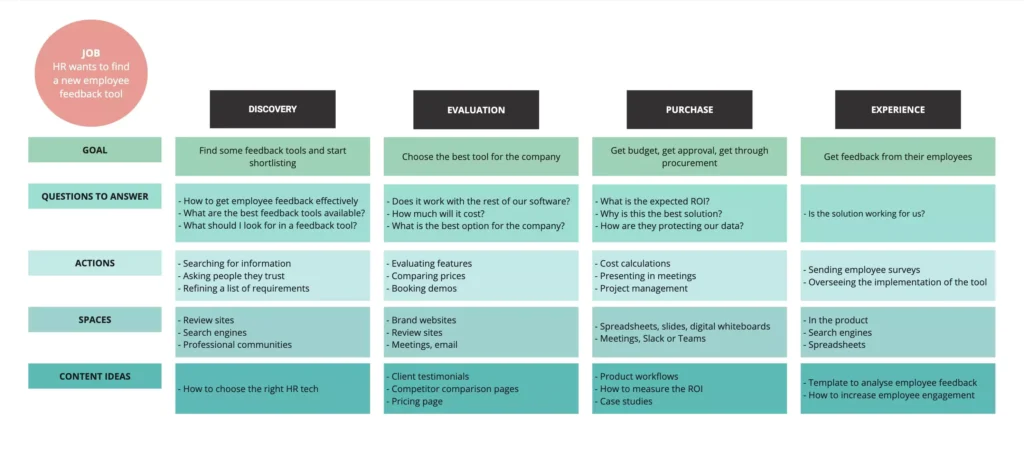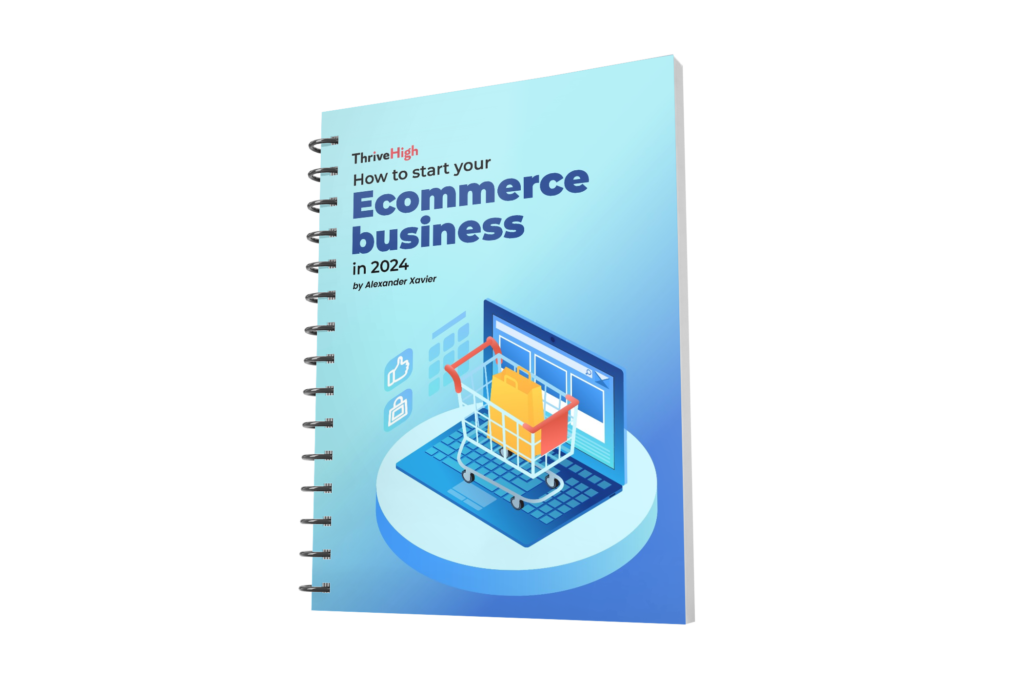In a world of AI-generated content, here’s how you can add a much needed personal touch and humanize your brand to connect with Users.
High points
- Users are drawn to platforms such as Reddit, Instagram, and TikTok due to their innate longing for genuine human connections and content that authentically strikes a chord.
- Brands ought to emphasize authenticity, shape their strategies around the user, and leverage the diverse and insightful perspectives and experiences of actual individuals.
- Instead of fixating on search volume, rely on audience research and insights gleaned from your sales and support teams to craft content that genuinely aids users along their purchasing path.
- Engage in collaboration with internal specialists, utilizing ghostwriters if needed, to generate content that highlights authentic knowledge and expertise from within the organization.

In an era where AI enables the creation of content by non-experts, trust in online content has become precarious for users.
This shift is apparent in the growing inclination towards seeking genuine human experiences and opinions on social media platforms. Users now append phrases like “real experiences” to their search queries or utilize platforms like TikTok or Instagram as search tools, despite harboring doubts about influencer content.
More than ever, individuals yearn for authentic connections with others.
While some companies may mistakenly shift entirely to AI-generated content in a bid to cut costs, others can seize this moment as an opportunity to foster deeper human connections and engage meaningfully with their audiences.
A Human Touch Is Key In The AI Era
Generative AI is exerting a significant influence on SEO and content trends. Merely being able to generate content at scale no longer confers a competitive advantage. Brands must pivot their strategies towards a more customer-centric approach by:
Deepening their understanding of their audience and crafting content that addresses genuine customer needs and pain points, rather than solely focusing on search volume or product features.
Harnessing the expertise of real professionals as content creators, thereby elevating authentic experiences to produce genuinely valuable content from a credible source.
Engaging their internal experts as brand ambassadors and integrating them into their content distribution strategies. While AI can streamline processes and enhance productivity, leveraging human expertise serves as a crucial differentiator for brands seeking to humanize their content strategy.
1. Prioritize Content Aligned with the User Journey Over Search Volume
In the era where generative AI has revolutionized the landscape of content creation, making it accessible and inexpensive for all, the conventional approach to content marketing — focusing on producing vast quantities of content — has evolved.
Brands used to generate content around every conceivable keyword related to their product. However, with the democratization of content creation, a new paradigm is needed.
It’s time to shift away from the obsession with search volume and toward crafting content that deeply resonates with the audience, offering invaluable insights.
Brands must now rely on meticulous audience research and user insights to tailor content more precisely to the actual user journey.
During my tenure at Sanity, I came to realize that merely creating content that aligned with our audience’s searches wasn’t sufficient. We needed to engage with them throughout their purchasing journey.
The challenge lay in the fact that procuring a headless CMS is a protracted process involving multiple stakeholders.
After extensive research, we identified the primary decision-maker and directed our efforts towards creating content specifically tailored to their needs.
One effective approach is to employ the Jobs To Be Done framework and map out the typical user journey of your ideal customer.
Formulate a team of experts to brainstorm content ideas aimed at assisting your ideal customer with their objectives. For instance, let’s consider a scenario where you’re employed by a survey tool company.
Through user research, you discover that a pivotal use case for your product is employee feedback surveys, and HR teams are actively seeking reliable providers to collaborate with. Here’s how the content ideation process could unfold:

You can utilize resources like the Miro template to facilitate your content ideation session.
2. Sales and Support Conversations into Your Audience Research
Deepening your understanding of your audience is pivotal for creating content that fosters meaningful connections with them.
Chances are, your company possesses a wealth of insights into how users engage with its products, which you can leverage as part of your audience research.
Companies routinely engage with their customers through sales discussions, support inquiries, online communities, and market research interviews.
These interactions offer valuable opportunities to uncover the pain points your product addresses, common support queries, your competitive positioning, and where your target audience encounters your brand.
Having worked in product categories that are relatively new or ambiguously defined, I’ve employed this strategy to pinpoint the key phrases actual customers use when discussing our product.
Incorporating these keywords into our SEO strategy expanded our reach, conveying a compelling message: “We understand you.”
You can utilize meeting transcripts alongside an AI tool of your preference to pinpoint your audience’s pain points, assess your competitive landscape, identify common friction points in using your product, or extract prevalent key phrases used by your audience.
Various paid tools offer this capability at scale, such as the Google Natural Language API or MonkeyLearn, with prices ranging from free APIs to enterprise-level solutions.
Alternatively, with basic coding skills, you can employ tools like KeyBERT for free keyword extraction or explore resources like Lazarina Stoy’s guide on entity and sentiment analysis for SEO.
Certain user research platforms like Chorus or Dovetail already integrate AI features to aid in this process.
Additionally, tools like Descript, TL;DV, or Fathom can serve as meeting recorders to facilitate this endeavor.

3. Facilitate Content Creation with Internal Experts
Leveraging the expertise of your internal team members can effectively convey your brand’s true proficiency and expedite the creation of unique, high-quality content.
While exceptional subject matter experts often reside within your organization, they typically have limited bandwidth to contribute directly to the marketing content creation process.
Rather than waiving their valuable insights, consider engaging a ghostwriter to conduct interviews with your internal experts.
The ghostwriter’s role transcends that of a mere writer; they act as facilitators, adept at translating the experts’ knowledge into compelling content.
Through in-depth interviews, they extract the expert’s insights, ensuring that the content authentically reflects their expertise and style. They pose informed questions and capture the subtleties of their explanations.
These interviews can serve as the basis for a series of blog posts, be repurposed into social media snippets, or even form the foundation for a podcast.
Encourage your subject matter experts to provide feedback throughout the process. Begin by crafting a comprehensive content brief centered on the audience’s interests regarding the topic.
Invite the expert to review the brief, adding any overlooked elements or rectifying inaccuracies. Upon completion of the content, the internal expert should conduct a final review before it is published.
In my experience, this collaborative approach demands minimal time from internal experts: approximately five to 10 minutes for an initial review of the brief, 30 to 60 minutes for the interview, and 10 to 20 minutes for the final review.

4. Offer An Authentic Point Of View
While maintaining a consistent brand voice is crucial, allowing the unique voices and personalities of your authors to shine through can infuse your content with vibrancy and captivate an audience seeking genuine human connection.
There’s a genuine hunger for these distinct perspectives and voices.
Google recently introduced a new SERP feature, “Discussions and Forums,” highlighting authentic user experiences in review searches. In 2023, it unveiled Perspectives, a novel SERP type spotlighting personal experiences through a blend of videos, social media posts, and news.
Over the past year, Google has experimented with various ways of attributing author names to articles and top stories.
Here are some strategies to cultivate an authentic point of view:
- Define a clear and distinctive brand voice that mirrors your company’s values and character. This voice should remain consistent across all content while allowing individual authors to inject their personalities.
- Establish content guidelines that encourage authors to infuse their unique voices and personalities into their writing. This could entail sharing personal anecdotes, expressing opinions, or adopting a communication style that reflects their individuality. These guidelines should strike a balance between maintaining the overarching brand voice and granting freedom for individual perspectives.
- Actively incorporate personal narratives and experiences from your team and clients into your content. Utilize case studies, interviews, guest posts, or featured quotes to add a human touch to your content.
- Offer training or resources to your team on effective storytelling techniques. Equip them with the skills to integrate personal experiences seamlessly and anecdotes into content, enhancing the message while upholding professionalism and objectives.
- By offering a distinctive, authentic perspective, you can set yourself apart and forge stronger connections with your audience. Don’t hesitate to provide clear guidance in your content and integrate personal stories from your team or clients to enrich the narrative.
Go From Beginner to Expert in
Just 8 Months!
With Purdue PG Digital Marketing Program
5. Enhance Your Top-Performing Articles with Personal Videos
Human connection resonates deeply with audiences, evident in the immense success of platforms like TikTok. Narratives conveyed through video storytelling often captivate more effectively than traditional articles.
You don’t necessarily need to overhaul your content strategy; instead, consider repurposing your most successful articles into video format.
To get started, pinpoint your top-performing articles and draft a script that encapsulates their key points. You can involve the original author, handle it yourself, or collaborate with your company’s brand ambassador, if available.
Embed the video into your webpage and gauge user feedback on this new interactive experience. Positive responses may warrant expanding this approach to other pages.
This tactic not only enriches existing content but also opens avenues for video ranking. Implement structured data for video on your webpage or share the video on platforms like YouTube or TikTok.
Crafting the script may pose a challenge, but AI can serve as a valuable ally. Tools like ChatGPT can generate a script summarizing your article, which you can then refine to align with your brand voice.
Video editing presents another hurdle, but once again, AI can offer assistance. AI-powered video editors streamline the process by eliminating awkward pauses and filler words, creating engaging thumbnails, and facilitating the addition of intros and outros.
By leveraging personal videos, you can augment the appeal and accessibility of your content, fostering deeper connections with your audience in an increasingly visual digital landscape.

6. Empower Your Employees as Influential Voices
Let’s address a crucial point upfront: unless it’s outlined in their contract or they’re compensated, employees aren’t obligated to share your brand’s content.
However, a significant benefit of collaborating with your internal experts to craft content is their inclination to share it on their own platforms. Click here for read more about content.
Sharing boosts their image, cultivates their personal brand, and allows them to showcase their latest contributions. When they take pride in content bearing their name, they’re eager to share it with their networks.
Yet, your subject matter experts might not be social media savvy. Here are some strategies to facilitate this approach:
Assist internal experts in distributing their content by offering to draft Twitter threads or LinkedIn posts that they can personalize and publish on their social profiles.
Utilize generative AI to condense lengthy articles into engaging summaries that pique curiosity and drive audience engagement.
Recognize and reward participating employees by resharing their content and publicly acknowledging their contributions. Track the impact of their efforts and express gratitude through company channels like Slack or all-hands meetings.
Offer optional social media workshops for interested employees, providing guidance on growing and enhancing their personal brand.
Establish clear guidelines outlining appropriate content sharing practices, emphasizing inclusivity and client confidentiality.
Leverage social media analytics to monitor the reach and effectiveness of shared content. This data enables you to identify content resonating most with your audience and refine your strategy accordingly.
In Conclusion
The pervasive influence of AI is fostering a growing skepticism among users towards content lacking in human authenticity.
Why do users flock to platforms like Reddit, Instagram, and TikTok? It’s because of their innate longing for genuine human interactions and content that truly strikes a chord.
For brands, the real challenge lies not only in keeping pace with AI’s advancement but in embracing the human elements that foster genuine connections and instill trust.
Authenticity should be the cornerstone of brand strategies, with a focus on understanding and catering to the user’s needs, while tapping into the rich and diverse perspectives of real individuals.
This approach enables brands to create content that not only grabs attention but resonates deeply and leaves a lasting impression. In the age of AI, the human touch isn’t merely a bonus; it’s indispensable.

